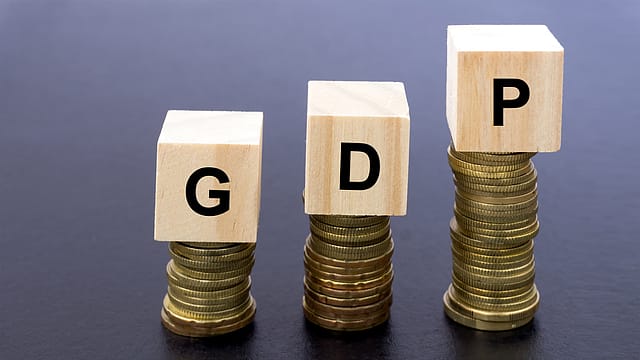India's GDP to grow at 6.5-7.1% in FY23: Deloitte India
ADVERTISEMENT

Impacted by the global slowdown and rising inflation for several months, India is expected to see its GDP growth at 6.5-7.1% in the financial year 2022-23 (April 2022 to March 2023). In FY22, India's GDP had grown by 8.7%.
According to the latest report by Deloitte India, inflation remains the main pressing issue in front of policymakers. India's headline inflation has risen by 1.9 percentage points since April 2022. It remains above the Reserve Bank of India's (RBI) tolerance range of 4 (+/-2)% over the past 9 months. However, despite downward revisions, India is expected to remain the world's fastest-growing economy in FY23.
Projections by Deloitte India are in line with estimates of global agencies like Moody's and IMF. The US-based global ratings agency Moody's Investors Service this month lowered India's growth projections to 7% from 7.7% earlier due to the weak rupee and high oil prices. International Monetary Fund (IMF) also cut India’s GDP growth forecast for 2022 by 1.4 percentage points since April to 6.8% on a weaker-than-expected recovery in the second quarter and subdued external demand.
The Deloitte India report, meanwhile, says the situation could worsen globally in a few months from now, including in India. The country's import bills are on the rise due to the runaway dollar, and global slowdown and recession fears in some of the advanced economies will put immense pressure on policymakers.
January 2026
Netflix, which has been in India for a decade, has successfully struck a balance between high-class premium content and pricing that attracts a range of customers. Find out how the U.S. streaming giant evolved in India, plus an exclusive interview with CEO Ted Sarandos. Also read about the Best Investments for 2026, and how rising growth and easing inflation will come in handy for finance minister Nirmala Sitharaman as she prepares Budget 2026.
“The seemingly unending saga of global economic uncertainties has begun to negatively impact India’s main drivers of growth. So volatile is the current economic environment that if one is looking for certainties from the recent data releases, it is unlikely that a consistent outlook will emerge,” says the Deloitte India report.
For FY24, the consulting firm says the country's GDP growth could remain at 5.5-6.1% if economic fundamentals show some improvement on both country and global levels. “Sustained demand growth may be the most-awaited cue for a sustained push for investment. Exports and government spending may not support growth as much owing to moderating global demand and limited resources at disposal, respectively,” said Rumki Majumdar, economist, Deloitte India.
Another major global financial institution Morgan Stanley has, meanwhile, said India will become the third-largest economy by 2027 after the US and China on the back of favourable domestic policies and a focus on boosting investment and jobs. This will propel its GDP from $3.4 trillion currently to $8.5 trillion over the next decade, it said in its report this month.
As compared to China, though India's economy stands where China was in 2007, its working-age population is young -- India's median age is 11 years younger than China's -- and is expected to contribute to its GDP in the longer run. Also, the coming decade, projects Morgan Staley, will see the Indian economy growing at an average of 6.5% and China's at 3.6%. What's more advantageous, says Morgan Stanley, is that India is spending heavily on scaling its digital infrastructure, which includes initiatives like Aadhaar.
